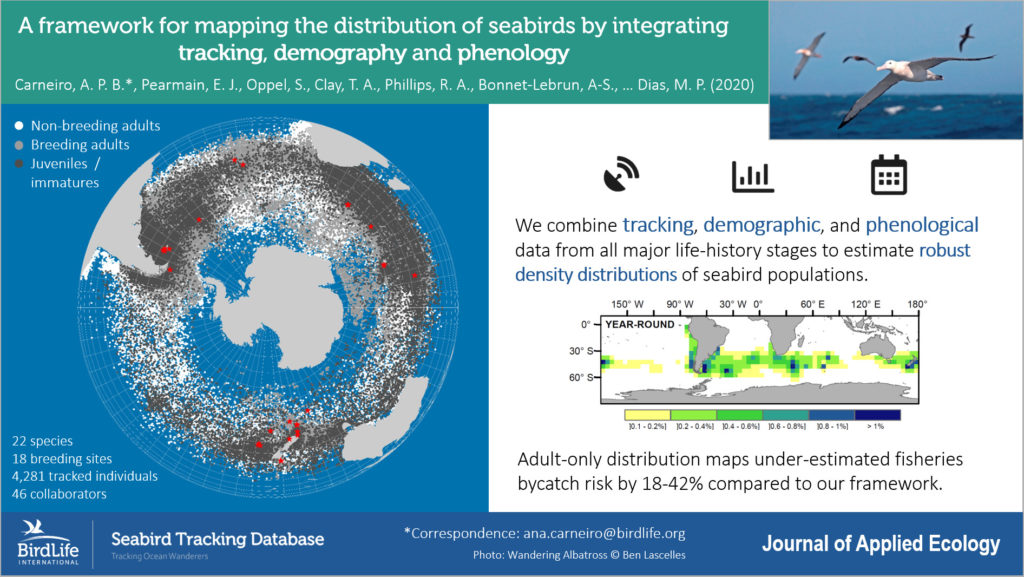In newly published research, A framework for mapping the distribution of seabirds by integrating tracking, demography and phenology, Ana P. B. Carneiro et al. present a new framework aiming to tackle challenges of tracking seabird movement and ultimately improve bycatch mitigation measures.
There is increased global awareness that our oceans are under threat. Marine megafauna such as seabirds, marine turtles, marine mammals, and sharks and rays, are in danger largely because of fisheries activities, through direct competition for resources, deliberate capture for food and incidental capture (bycatch). Unfortunately, the behavioural and life-history traits of many marine megafauna populations make them particularly vulnerable. For long-lived and slow-breeding species (which have prolonged maturity, may not breed every year and have few offspring), even small increases in mortality can lead to significant population declines.
Understanding where and when animals overlap and interact with threats is crucial to halt wildlife population declines, as it enables conservation actions to be directed to areas where they can have the greatest benefits. Take seabirds as an example: some fisheries have already reduced seabird bycatch by 80% by adopting the use of mitigation measures. Multi-species hotspots of use at the global scale can be identified by mapping the overlap between seabird distributions and fisheries. This provides crucial information for stakeholders and policy-makers for improving regulations, targeting bycatch observer programmes and monitoring compliance with recommended bycatch mitigation, to reduce bycatch to negligible levels.
Over the last few decades, researchers have used electronic devices attached to a wide range of seabird species to record bird movements. Tracking devices have given us a completely new insights into the lives of birds at sea. Despite major recent advances, studying movements of juvenile, immature, and non-breeding adults remains particularly challenging because these life-history stages spend extensive periods at sea and return to colonies only for short periods, making the retrieval of devices difficult. As a result, evaluations of risk are likely to be biased or underestimated.

Our study provides a framework which synthesizes and improves upon previous approaches to identify seabird hotspots at sea. This is an extension of the work BirdLife International has been doing since the Tracking Ocean Wanderers publication in 2003. We integrate seabird tracking data with demographic information and phenological data from major life-history stages to estimate density distributions of whole seabird populations. We present the results of the application of our framework to 22 seabird species of global conservation concern, and use overlap with fisheries as a relevant case study for examining how neglecting particular life-history stages can lead to erroneous maps of risk. We demonstrate in our study that the omission of juvenile, immature and adult non-breeding distributions lead to distribution maps that underestimate longline fishing bycatch risk by 18-42%.
The Seabird Tracking Database and all our data collaborators have been fundamental in this achievement. We used thousands of tracks, from all the major life-history stages, to identify the most important areas for albatrosses and petrels in the Southern Ocean. We recommend use of our distribution maps to improve and enforce bycatch mitigation measures in those areas where large proportions of threatened seabird populations occur. We embrace the principles of open science and we make all our analysis available. We would love to see our framework being applied to other marine megafauna and marine threats.
The full article, A framework for mapping the distribution of seabirds by integrating tracking, demography and phenology, is free to read for a limited time in Journal of Applied Ecology.
Note: This was originally written as a blog post for the Journal of Applied Ecology blog, and published here: https://appliedecologistsblog.com/2020/02/06/identifying-hotpots-of-threats-to-marine-megafauna/